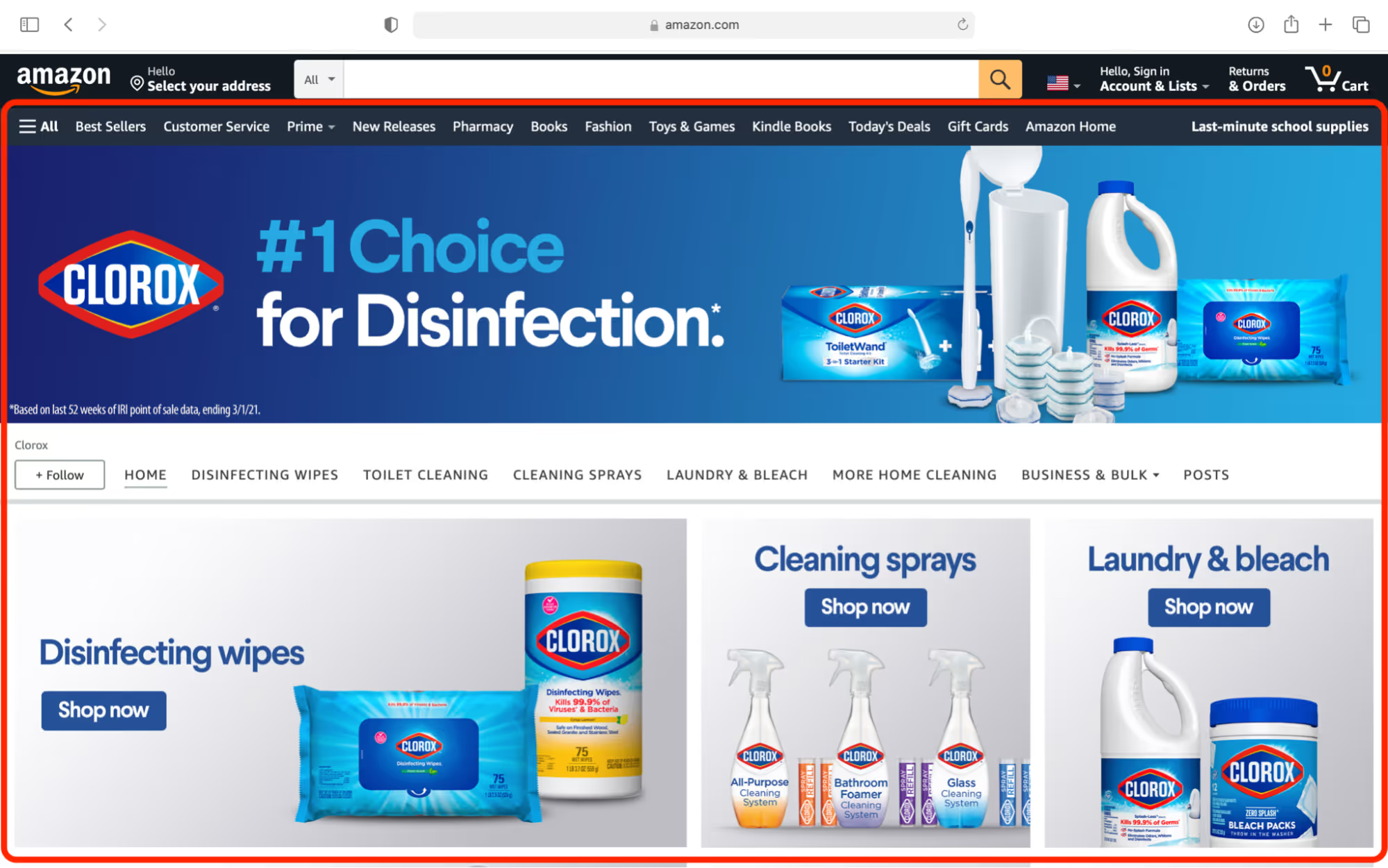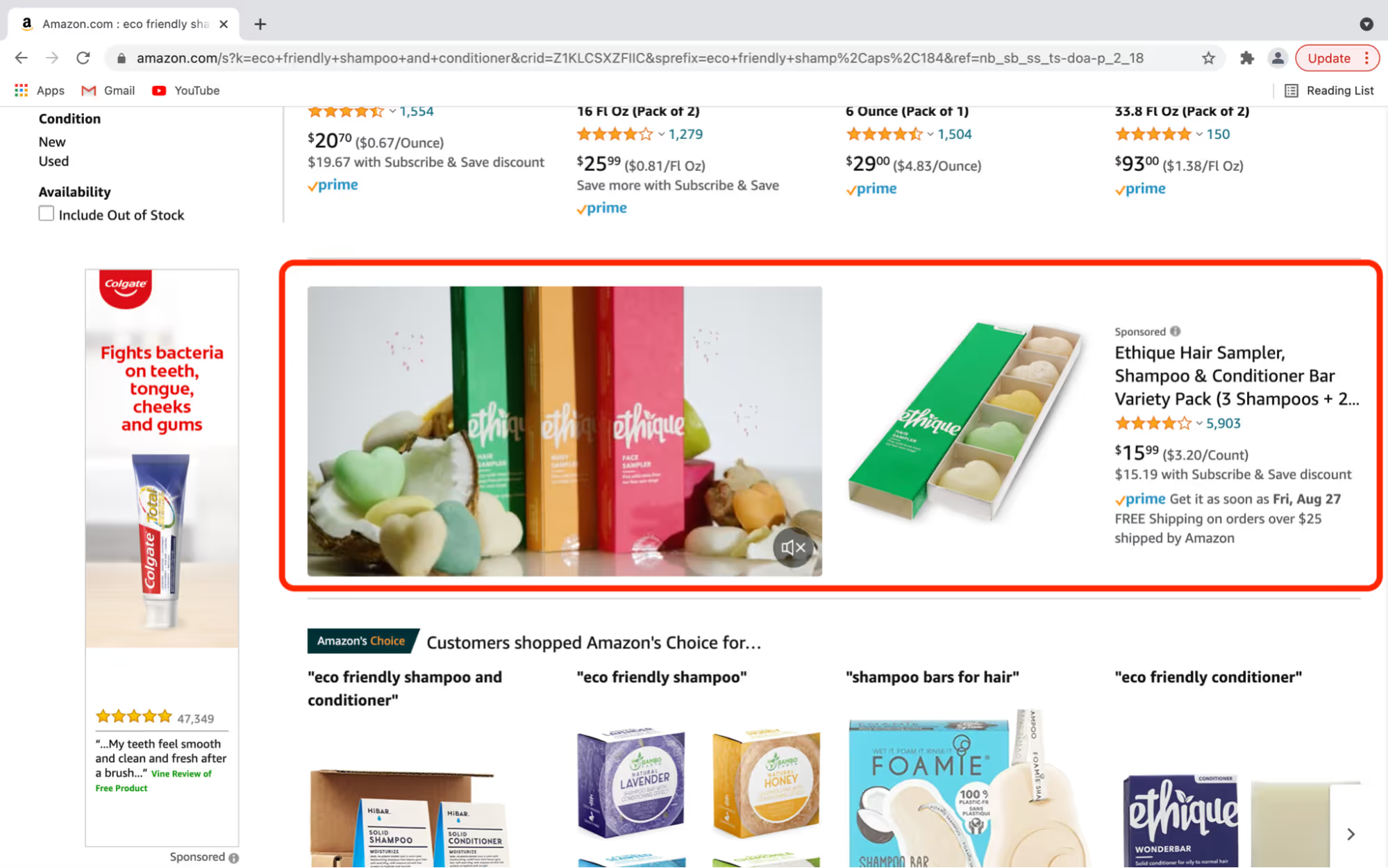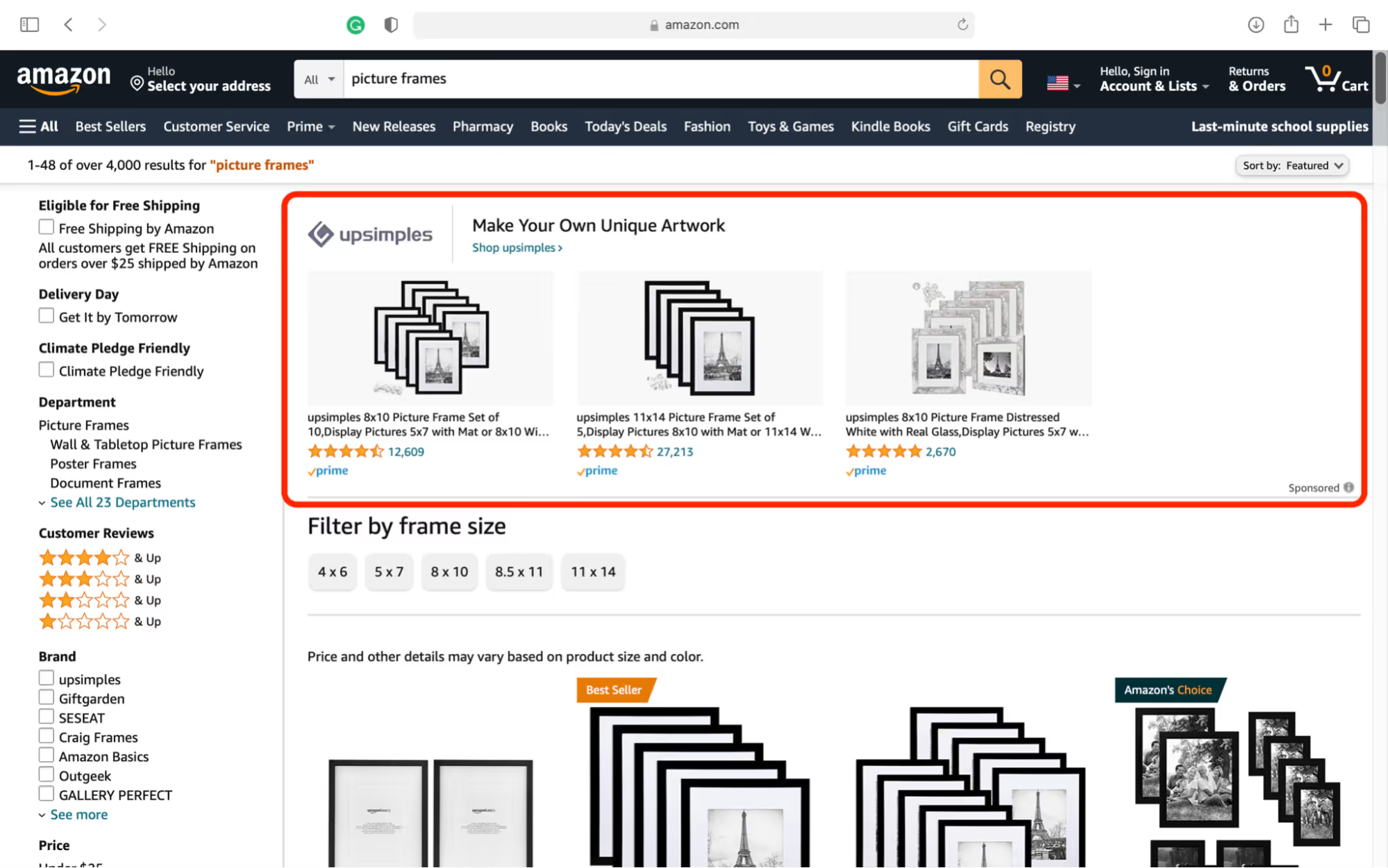
Conversation

🥳 Feedback Received!
Thanks for taking a moment to share your thoughts — it genuinely helps us make each chapter sharper.
What happens next:
- Your feedback goes straight to our product team.
- We’ll use it to refine lessons, clarify examples, and make the program even more useful.
Appreciate you helping make this program better for everyone.
Ready for your next challenge? 👇
Moving into Brand and Display Ads
Once your sponsored product ads are a well-oiled keyword machine, consider venturing into the two other ad types we described earlier: sponsored brand and display ads.
To keep your ad spend well allocated, we recommend a 70/25/5 budget split across types:
- 70% sponsored product ads
- 25% sponsored brand ads
- 5% sponsored display ads
That’s because traditional (not video) sponsored brand ads can end up having a low conversion rate, and sponsored display ads have some quirks like no negative targeting. Concentrating your resources on your now-tried-and-true sponsored product campaigns reduces risk, although investing some capital in brand and display will expand your research and discovery.
(If your ad budget is tight, you might want to adjust the above ratio. You should have enough brand/display ad spend to get sufficient performance data.)
We won’t go into the step-by-step process for launching brand and display ads, which is pretty straightforward once you get started. Instead, we’ll point out the unique characteristics of each ad type.
But before you launch brand or display ads, you’ll need to join Amazon Brand Registry.
What is Amazon Brand Registry?
Amazon Brand Registry is designed to ensure that you’re the only one who’s selling your products. It’s Amazon’s free-to-join program for brand protection. You need to have an active registered trademark to join (sometimes pending registrations are accepted too).
Features of Brand Registry include:
- Proactive removal of wrong or infringing content
- More authority over your brand’s product listings
- Streamlined process for reporting IP violations
- Proprietary text and image search
Besides IP protection and brand and display ads, joining Amazon Brand Registry gives you access to A+ content—rich text and images on your product pages—brand analytics reports like the Repeat Purchase Behavior Report (useful for understanding and improving retention), and Amazon Stores. On that note...

What are Amazon Stores?
An Amazon Store is a landing page for your brand, with a unique Amazon URL. You can showcase all your products in one place, making it easier for shoppers to find them, get product recommendations, and see your brand’s images and videos. You can also choose to drive sponsored brand and display ad traffic to your Store. It’s free for Amazon Brand Registry members to have one.
Amazon Stores, like online stores on Shopify and other ecommerce hubs, have pre-built templates, so you don’t have to put significant resources toward design. If you move into display and brand ads, and if you have more than a handful of products, it’s good practice to set up a Store for brand discovery, storytelling, and loyalty.

Brand ads
Once you’ve enrolled in Brand Registry, you can get started with brand ads. They’re often less expensive than product ads, but you’ll get more curiosity clicks: people clicking while they’re in the research stages of the buyer journey. That’s why they’re best for brand awareness, not conversions.
As we mentioned earlier, sponsored brand video ads, on the other hand, can typically be the highest-converting non-branded ad format. They’re definitely worth trying. Here’s Amazon’s guidance on formatting and specs.

When launching brand ads, here are some things to bear in mind:
- Creative: You’ll need to write your brief ad headline, and you can also choose which images to feature. For your headline, don’t make claims you can’t substantiate, like that your product is #1. Focus instead on your unique value props and the problems you’re solving.

- Targeting: Use keywords that will raise awareness of your products. Because you’re reaching shoppers earlier in their buyer journey, they may know what problem they want to solve, and they may even know what product or category they want to solve it with. But they might not know what brand to buy from. Targeting options include promoting complementary products (e.g., pillowcases for someone searching for pillows), competitor conquesting, and, of course, applying your research from your sponsored product campaigns.
- Metrics: A nice perk of brand ads is that they have new-to-brand metrics. These tell you how many of your orders came from first-time customers to your brand on Amazon, including the percentage of total orders and sales that are new-to-brand and total new-to-brand sales.
Display ads
As a quick recap, display ads are Amazon’s multi-channel advertising and remarketing program. They use product or audience targeting to reach shoppers who have shown interest in a product or category type, and they can appear in places on and off Amazon that other ad types don’t.
Some things to know about display ads:
- Creative: Creative assets can be automatically generated, including a product image, price, deals and savings badging, star rating, and “shop now” button. You can choose to add a custom logo, headline, or product image.
- Targeting:
- Audience targeting: There are three remarketing audience types for display ads: views, searches, and purchases. For your first display ad campaign with audience targeting, start with views remarketing, which lets you target people who have viewed but not purchased your products in the last 30 days. Views remarketing has the largest audience. Then try searches remarketing to target people who have searched for keywords related to your product. Purchases remarketing, the third type, targets shoppers who have bought from you in the past. It has the smallest audience but can be a potent tool for customer retention.
- Product targeting: For your first display ad campaign with product targeting, start with one ASIN (probably your best seller) and run a campaign targeting your competitors’ ASINs. Once you hit your target ACOS, you can expand out from there. All products in a given campaign will have the same bid.

- Metrics: Metrics for sponsored display ads will look familiar to you: impressions, clicks, CTR, CPC, CvR, etc. The four display ad reports—Campaign, Targeting, Advertising Product, and Purchased Product—also offer insights like “14-day total sales,” the number of sales made within 14 days of a shopper’s initial engagement with an ad.


